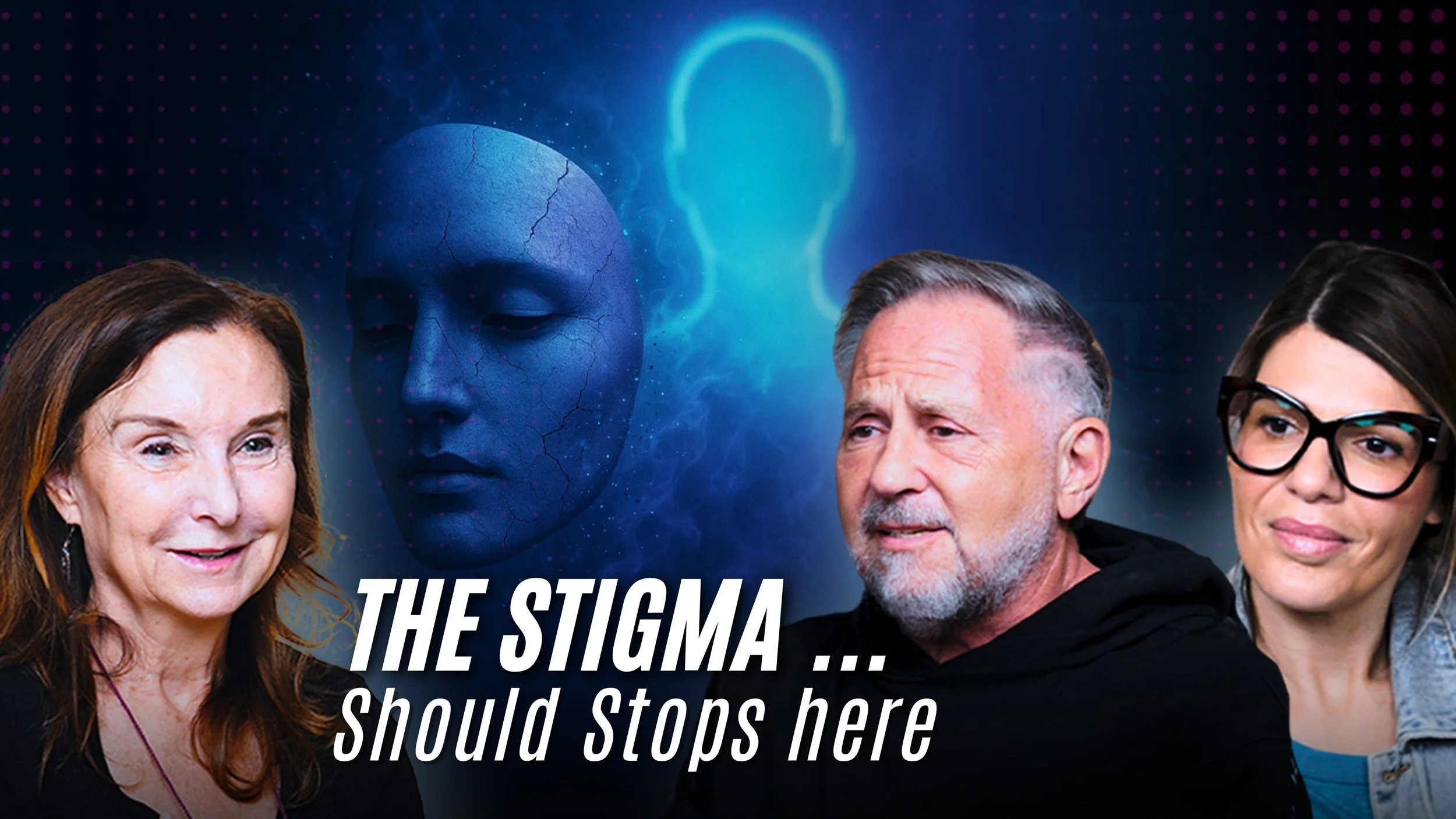What Do Charlie's Angels and Cocaine Have in Common? | Dina L.
Listen or watch on your favorite platforms
Dina Lipolt — a nationally known entertainment attorney whose path to success began in a world filled with shame, secrecy, addiction, and deep internal battles. Dina opens up about growing up in a patriarchal town, hiding her sexuality, and carrying a lifelong belief that she “wasn’t good enough.”
Growing up
Growing up in the small town of New Paltz, New York, she always felt like she was living between two worlds. The town proper revolved around the Catholic Church, strict gender roles, and a patriarchal system where men held every position of authority. Yet just a few blocks away, the college community thrived with music, activism, and open-minded expression. As a child in the 70s, she felt the tension between who she was expected to be and who she knew she was inside.
She remembers thinking, “I always knew I was gay — but back then, gay wasn’t cool.” In a world that didn’t reflect her identity, she learned early to hide, to overperform, and to question her own worth. Messages from her environment and her family’s beliefs quietly planted the idea that she wasn’t “good enough,” a belief she carried well into adulthood.
First Exposure & Emotional Escape
Her first addiction wasn’t drugs — it was escape. As a young teenager, she detached from pain through television, fantasizing about strong women on shows like Charlie’s Angels. Soon, she discovered alcohol at 13. Drinking filled the silence, the confusion, and the fear she carried alone.
When she finally entered college on a music scholarship, she was already using alcohol and drugs to cope with her identity, her dyslexia, and the pressure of being “the girl who could never fail.” She recalls:
“Alcohol made everything quiet… it lifted everything for a moment.”
Active Addiction
College quickly became a battleground. Struggling in her music program, hiding her sexuality, and drowning in self-doubt, she began drinking heavily and using cocaine to keep the party — and the numbness — going.
The consequences piled up: failing music theory, losing academic standing, and eventually getting expelled after a reckless stunt that involved sliding down a snowy hill on cafeteria trays covered in Vaseline.
She returned home ashamed, depressed, and spiraling deeper into a cycle of alcohol, cocaine, and emotional chaos. Relationships suffered, her mental health deteriorated, and she began to feel like there was no way out.
Hitting Bottom
Her lowest point wasn’t one dramatic incident — it was a slow erosion of self. Breakups devastated her, and the pain of losing a partner pushed her deeper into addiction. Friends and family noticed she wasn’t “right.”
Her mother, confused and worried, asked her what was wrong. In a moment of desperation, she came out as gay — expecting rejection. Instead, her mother responded, “Oh thank God, I thought you were on cocaine.”
She laughed, but inside she knew: she was on cocaine… and she was losing control.
This was her emotional bottom — the moment she realized she could not keep living in secrecy, shame, and self-destruction.
Getting Help
Getting sober didn’t happen overnight. It started with honesty, followed by community. She learned to sit with emotions she had spent years running from, using recovery tools to rebuild trust with herself and others.
For the first time, she confronted the messages she grew up with—the shame from religious conditioning, the pressure to conform, the belief that she wasn’t enough.
With support, she rebuilt her sense of self from the ground up.
Life Today
Today, her life looks profoundly different. She found purpose, stability, and a career she loves. She no longer hides who she is. She no longer drowns her emotions. She channels the same determination that once fueled her addiction into growth, creativity, and self-acceptance.
She’s living proof that you can come from shame, confusion, addiction, and self-doubt — and still build a life full of clarity, confidence, love, and joy.
Her story reminds readers: You are not broken. You are becoming. And recovery is possible for anyone willing to begin.
FAQs
How do childhood beliefs affect addiction later in life?
Early emotional wounds and identity struggles often become core drivers of addictive behavior.Can struggling with sexuality increase the risk of substance use?
Yes — hiding identity, shame, and fear can create emotional distress that people may try to numb with substances.What does “hitting bottom” usually look like?
It’s the point where the emotional, physical, or relational pain becomes impossible to ignore.How does recovery help improve mental health?
Recovery provides community, emotional tools, and structure that rebuild self-esteem and stability.Can someone rebuild relationships after addiction?
Yes — honesty, boundaries, and consistent healing often lead to stronger, healthier relationships.
Related episodes
ABOUT CROSSTALK
CROSSTALK reveals real stories of everyday people and notable figures, sharing their journeys from struggles to life-changing 'aha' moments with all kinds .


 Spotify
Spotify













